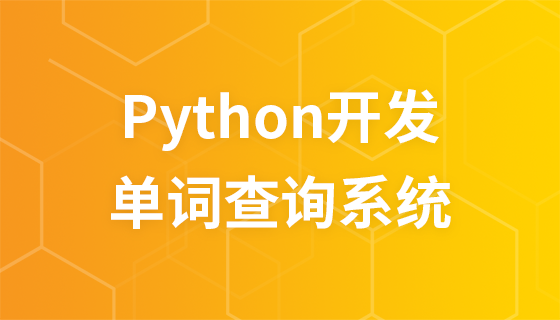本篇文章给大家带来的内容是关于python实现循环定时器的方法介绍(附代码),有一定的参考价值,有需要的朋友可以参考一下,希望对你有所帮助。
python 如何写一个定时器,循环定时做某一操作呢?
Timer 对象
from threading import Timer def hello(): print "hello, world" t = Timer(10.0, hello) t.start()
10秒后输出:
hello, world
重点研究 t = Timer(10.0, hello) 这句代码,python 提供了一个Timer 对象,它会在指定的时间后执行某一操作;它的完整形式:
class threading.Timer(interval, function, args=[], kwargs={})interval 是时间间隔,function 是可调用的对象,args 和 kwargs 会作为 function 的参数。
注意:这里只会执行一次 function,而不会一直定时执行,且 Timer 在执行操作的时候会创建一个新的线程。
Timer 在 python2 和 python3 有点区别:
# python2.7 def Timer(*args, **kwargs): return _Timer(*args, **kwargs) # python3.7 class Timer(Thread): pass
在 python3,Timer 是 Thread 的子类;在 python2,_Timer 是 Thread 的子类,而 Timer 只是 _Timer 类的工厂方法。
上面的代码只会打印一次 hello, world 后退出,那么如何循环间隔打印呢?
粗陋的循环定时器
一种方法是在 function 里继续注册一个 Timer,这样就可以在下一个 interval 继续执行 function;
from threading import Timer def hello(): print "hello, world" Timer(10.0, hello) .start() t = Timer(10.0, hello) t.start()
每隔 10 秒输出一个 hello, world。
达到效果了,但是这里面好像有点问题。回到 Timer 本身,它是一个 thread,每次循环间隔操作,系统都要创建一个线程,然后再回收,这对系统来说开销很大。如果时间间隔 interval 很短,系统会一下子创建很多线程,这些线程很难快速回收,导致系统内存和cpu资源被消耗掉。
所以不提倡在 function 里继续注册一个 Timer。
更 pythonic 循环定时器
这里有更 pythonic 的方法:
from threading import _Timer def hello(): print "hello, world" class RepeatingTimer(_Timer): def run(self): while not self.finished.is_set(): self.function(*self.args, **self.kwargs) self.finished.wait(self.interval) t = RepeatingTimer(10.0, hello) t.start()
重点研究 RepeatingTimer 类,它继承了 threading._Timer,但是重写了父类的 run 方法。这是 Python2 的写法,python3 中 RepeatingTimer 应该继承 threading.Timer。
为什么要重写 Thread 的 run 方法?
_Timer 是一个 Thread 子类,我们先看看 Thread 类的 run 用法。
from threading import Thread def hello(): print "hello, world" # 继承 Thread class MyThread(Thread): # 把要执行的代码写到run函数里面 线程在创建后会直接运行run函数 def run(self): hello() t = MyThread() t.start()
Thread 对象的完整定义:
class threading.Thread(group=None, target=None, name=None, args=(), kwargs={})其中 run 方法代码:
class Thread(_Verbose): def run(self): try: if self.__target: self.__target(*self.__args, **self.__kwargs) finally: # Avoid a refcycle if the thread is running a function with # an argument that has a member that points to the thread. del self.__target, self.__args, self.__kwargs
标准的 run 方法用于执行用户传入构造函数的 target 方法。 子类可以重写 run 方法,把要执行的代码写到 run 里面,线程在创建后,用户调用 start() 方法会运行 run() 方法。
所以 RepeatingTimer 重写 _Timer 的 run() 方法,可以改变线程的执行体,当我们调用 RepeatingTimer 的 start() 方法时会执行我们重写的 run() 方法。
再看看 RepeatingTimer 类中的 while not self.finished.is_set() 语句,self.finished.is_set() 直到 True 才会退出循环,定时器才结束。finished 是 threading.Event 对象。一个 Event 对象管理着一个 flag 标志,它能被 set() 方法设置为 True,也能被 clear() 方法设置为 False,调用 wait([timeout]) 线程会一直 sleep 到 flag 为 True 或超时时间到达。
我们知道定时器有一个 cancel() 方法可以提前取消操作。它其实是调用 Event.clear() 方法提前让 wait 方法结束等待,并且判断在 flag 为 true 的情况下不执行定时器操作。具体的代码:
class _Timer(Thread):
"""Call a function after a specified number of seconds:
t = Timer(30.0, f, args=[], kwargs={})
t.start()
t.cancel() # stop the timer's action if it's still waiting
"""
def __init__(self, interval, function, args=[], kwargs={}):
Thread.__init__(self)
self.interval = interval
self.function = function
self.args = args
self.kwargs = kwargs
self.finished = Event()
def cancel(self):
"""Stop the timer if it hasn't finished yet"""
self.finished.set()
def run(self):
self.finished.wait(self.interval)
if not self.finished.is_set():
self.function(*self.args, **self.kwargs)
self.finished.set()所以 RepeatingTimer 的 run 方法会一直执行 while 循环体,在循环体了会执行用户传入的 function 对象,并等待指定的时间。当用户想退出定时器时,只需要调用 cancel 方法,将 flag 置为 True 便不会继续执行循环体了。这样便完成了一个还不错的循环定时器。
以上就是python实现循环定时器的方法介绍(附代码)的详细内容,更多请关注php中文网其它相关文章!





Copyright 2014-2024 https://www.php.cn/ All Rights Reserved | php.cn | 湘ICP备2023035733号